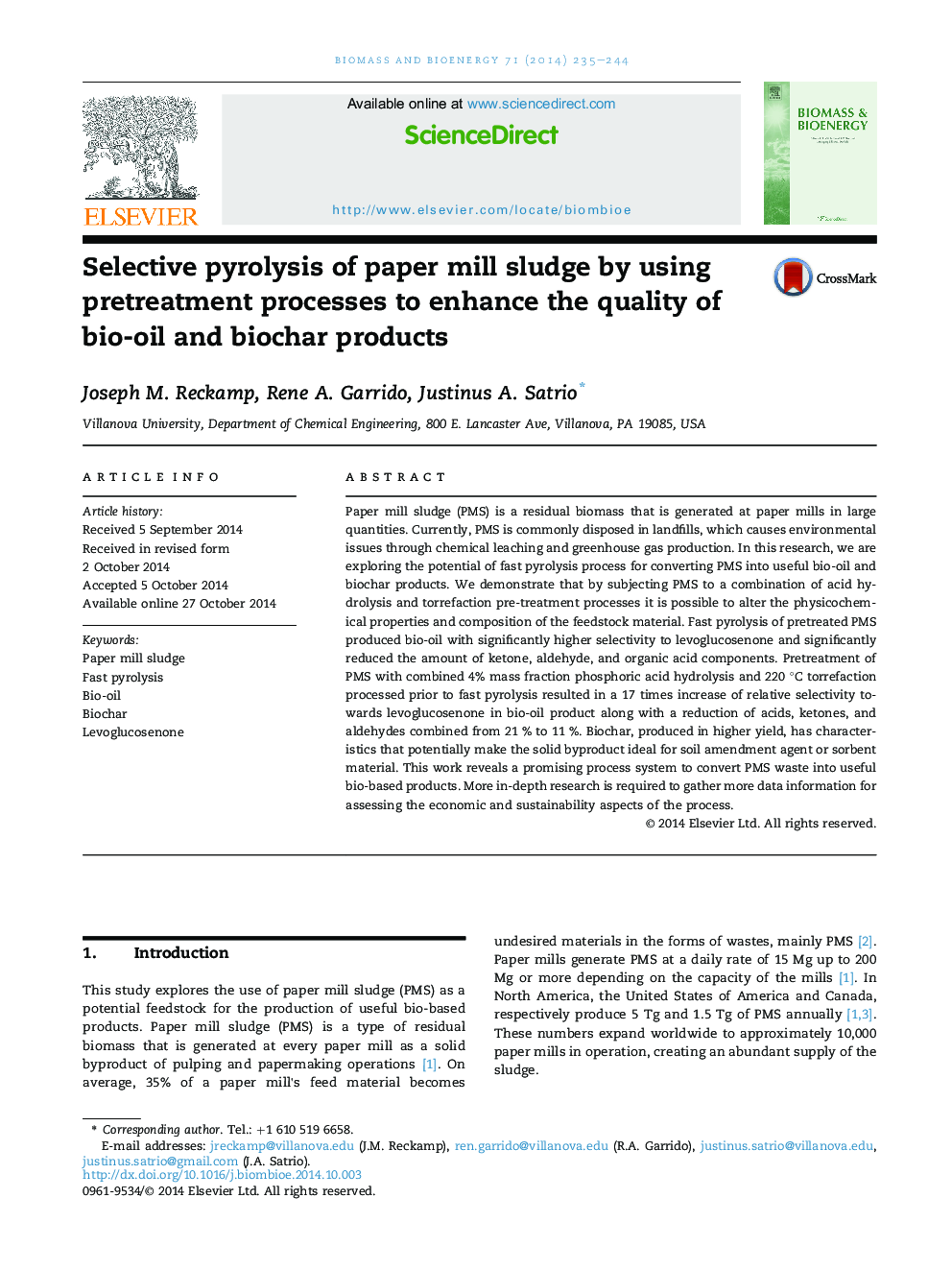| Article ID | Journal | Published Year | Pages | File Type |
|---|---|---|---|---|
| 676821 | Biomass and Bioenergy | 2014 | 10 Pages |
•Acid hydrolysis and torrefaction reduce bio-oil yield, but improve quality.•Dilute acid conditions provide optimal treatment for bio-oil quality and yield.•Pyrolysis of treated PMS produces high selectivity to levoglucosenone formation.•Treated PMS produces bio-oil with reduced acid, ketone, and aldehyde content.•Pyrolysis of treated PMS produces biochar with low volatile matter in high yield.
Paper mill sludge (PMS) is a residual biomass that is generated at paper mills in large quantities. Currently, PMS is commonly disposed in landfills, which causes environmental issues through chemical leaching and greenhouse gas production. In this research, we are exploring the potential of fast pyrolysis process for converting PMS into useful bio-oil and biochar products. We demonstrate that by subjecting PMS to a combination of acid hydrolysis and torrefaction pre-treatment processes it is possible to alter the physicochemical properties and composition of the feedstock material. Fast pyrolysis of pretreated PMS produced bio-oil with significantly higher selectivity to levoglucosenone and significantly reduced the amount of ketone, aldehyde, and organic acid components. Pretreatment of PMS with combined 4% mass fraction phosphoric acid hydrolysis and 220 °C torrefaction processed prior to fast pyrolysis resulted in a 17 times increase of relative selectivity towards levoglucosenone in bio-oil product along with a reduction of acids, ketones, and aldehydes combined from 21 % to 11 %. Biochar, produced in higher yield, has characteristics that potentially make the solid byproduct ideal for soil amendment agent or sorbent material. This work reveals a promising process system to convert PMS waste into useful bio-based products. More in-depth research is required to gather more data information for assessing the economic and sustainability aspects of the process.
